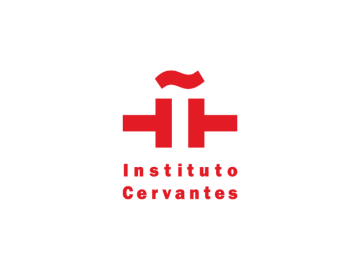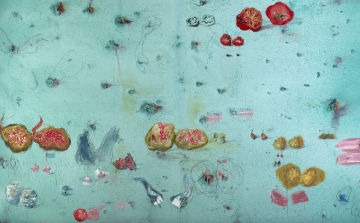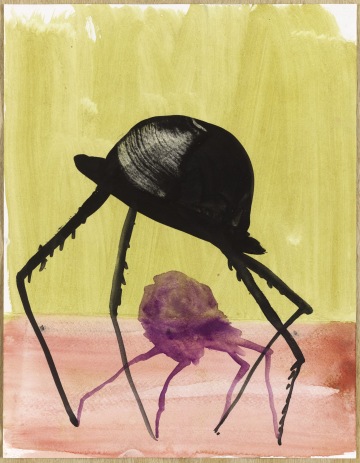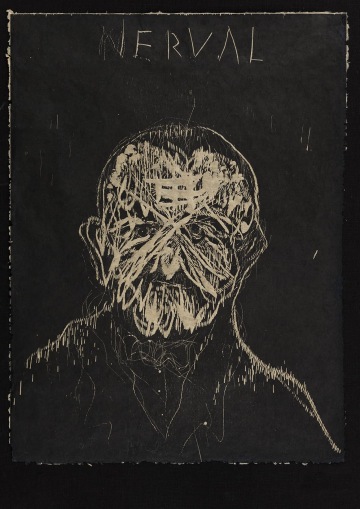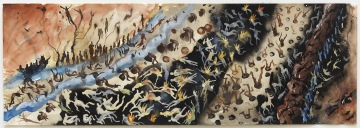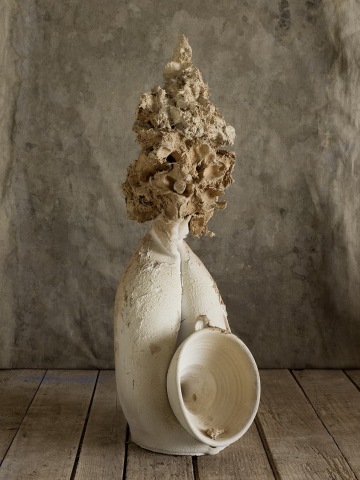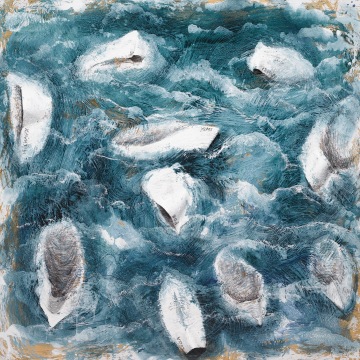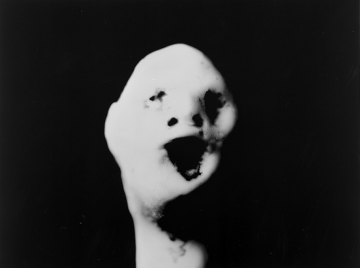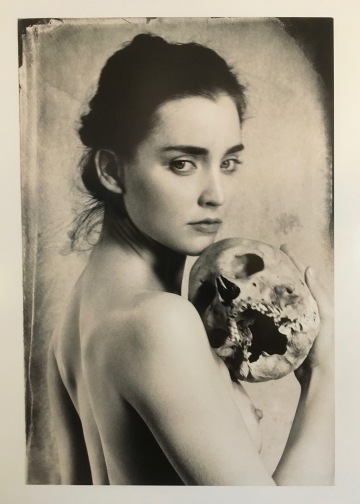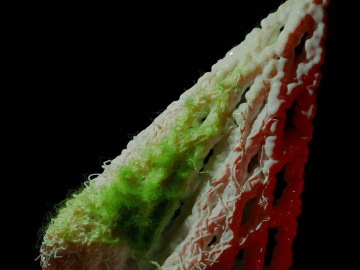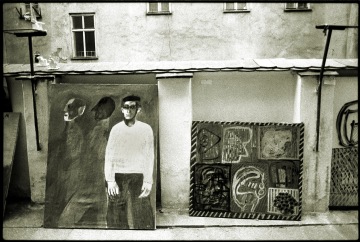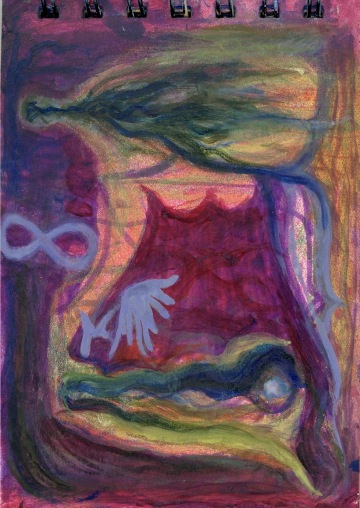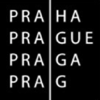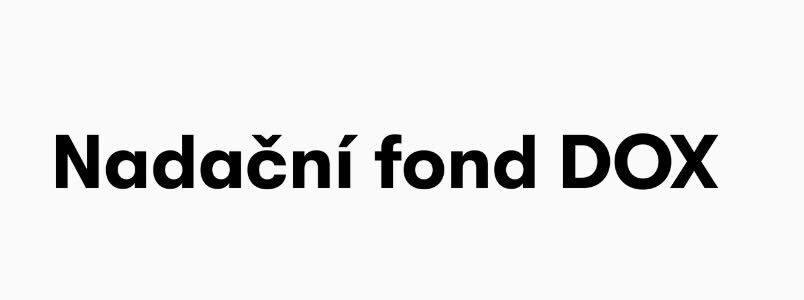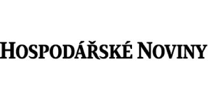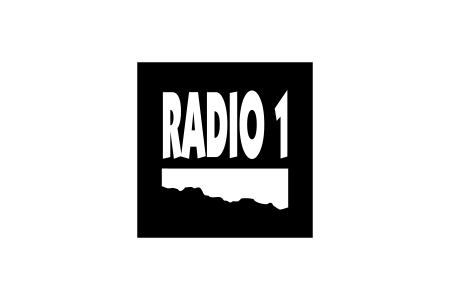We’re open to all, now also you
DOX Centre for Contemporary Art
Poupětova 1, Praha 7
Show on the map
Join us for the exhibition opening on October 3, 2025 at 7 pm. Free admission.
Miquel Barceló (Felanitx, Mallorca, 1957) belongs to a generation of Spanish artists that became internationally known in the 1980s and 1990s and which includes other painters, such as Juan Uslé, and some sculptors, such as Cristina Iglesias and Juan Muñoz.
Miquel Barceló and the Written Worlds is the artist’s first-ever presentation in the Czech Republic, and it focuses on his intense and long-standing relationship with literature. This relation has been a recurring subject at different points in his career, which spans more than four decades and which will be explored through paintings, ceramics, watercolours, bronzes, prints, and books.
After Barceló became known internationally, following his participation in documenta 7 (1982) and the Aperto section of the Venice Biennale (1984), he painted a series of monumental Libraries, which included self-portraits of him reading or sleeping next to empty bottles and open books. One can read the names of the writers he admired on the spines of the books on the library shelves. He also titled some of his works with names from well-known works of literature, such as Ahab and Hamlet, and several gigantic still lifes bear reference to books by his favourite authors, such as Francis Scott Fitzgerald and José Lezama Lima.
More recently Barceló has done illustrations for special editions of major works of world literature. Thus far these include The Divine Comedy by Dante, Faust by Goethe, and The Metamorphosis by Kafka. While working on illustrations for these three books, the artist developed an interest in the fantastic, inspired by their contents. A selection of his watercolours from all three of these classic literary works will be shown.
The exhibition will also feature several bronze sculptures related to literary themes, a series of portraits of philosophers – more expressive than realistic and made in ceramic – and a series of portraits of famous writers made with xylography.
While the oldest works on display in the exhibition date back to the 1980s, some of Barceló’s recent pieces will be presented as well, including still lifes and a series of paintings of shipwrecks titled with the names of poets who committed suicide.
Finally, on the top floor of the tower of the DOX Centre, visitors will have a chance to view the artist’s interpretation of a biblical theme: Noah’s Ark, a four-by-six-metre canvas, is Barceló’s largest painting to date, and this will be the first time the piece will be shown in a gallery space (it has only been shown in public once before, in a church in Salamanca, Spain).
The exhibition will also present a selection of books on which Miquel Barceló collaborated with different writers.
Curated by Enrique Juncosa
Miquel Barceló
Felanitx, Mallorca, b. 1957
One of Spain’s most acclaimed contemporary artists, Miquel Barceló is known for his relief-like mixed-media paintings, expressive bronze sculptures, and ceramics. An artistic nomad, his fascination with the natural world has inspired richly textured canvases that evoke the earthy materiality of art informel as well as compositions that study the effects of light and the ever-changing colours of the sea. Constantly experimenting with non-traditional materials such as volcanic ash, food, seaweed, sediments, and homemade pigments, his works bear the traces of the fierce energy that animates his creative process.
In the mid-1980s, Barceló began eliminating narrative elements from his works, creating an increasingly unreal space punctuated by holes, cracks, and transparencies. This process of simplification culminated in 1988, the year in which he travelled across the Sahara and created his white paintings. Relying on cultural and geographical diversity for inspiration, his time in Mali, where he established a studio, was a formative experience. For Barceló, painting is a visceral way of relating to the world, and as such, his art connects with the primitive beauty of cave paintings. He expands the technical boundaries of representation while remaining rooted in the grand tradition of painting, following in the footsteps of Picasso or Goya when representing bullfighting scenes or baroque painters when completing a commission for the Cathedral of Palma de Mallorca.
Born in 1957 in Felanitx, Mallorca, Barceló lives and works between Paris and Mallorca. In 1974 he was admitted to Palma de Mallorca’s Fine Arts School and subsequently attended the Royal Academy of Fine Arts in Barcelona. In 1976 he was involved in the happenings and protests of Taller Llunàtic, an avant-garde conceptual group. Despite his deep-rooted connection to Spain, Barceló draws inspiration from his time spent in various locations, having lived and worked in Barcelona, Portugal, Palermo, Paris, Geneva, New York, the Himalayas, and West Africa. He gained international recognition after his participation in the São Paulo Biennial (1981) and documenta 7 in Kassel (1982). In 2009 he represented Spain at the 53rd Venice Biennale. His work has been exhibited at the Centre Pompidou, Paris (1996); Museo Nacional Centro de Arte Reina Sofía, Madrid (1999); Musée du Louvre, Paris, where he showed over three hundred drawings illustrating Dante’s The Divine Comedy (2004); Museo Tamayo, Mexico City (2005); Museo d’arte della Svizzera italiana, Lugano (2006); Irish Museum of Modern Art, Dublin (2008); CAC Málaga (2008); Bank Austria Kunstforum Wien, Vienna (2012); Bibliothèque nationale de France, Paris (2016); and Musée Picasso Paris (2016). His public commissions include large-scale sculptural installations for the Chapel of Saint Peter in the Cathedral of Palma de Mallorca (2001–2006) and the Human Rights and Alliance of Civilizations Chamber at the United Nations Headquarters in Geneva (2008).
Co-organiser
